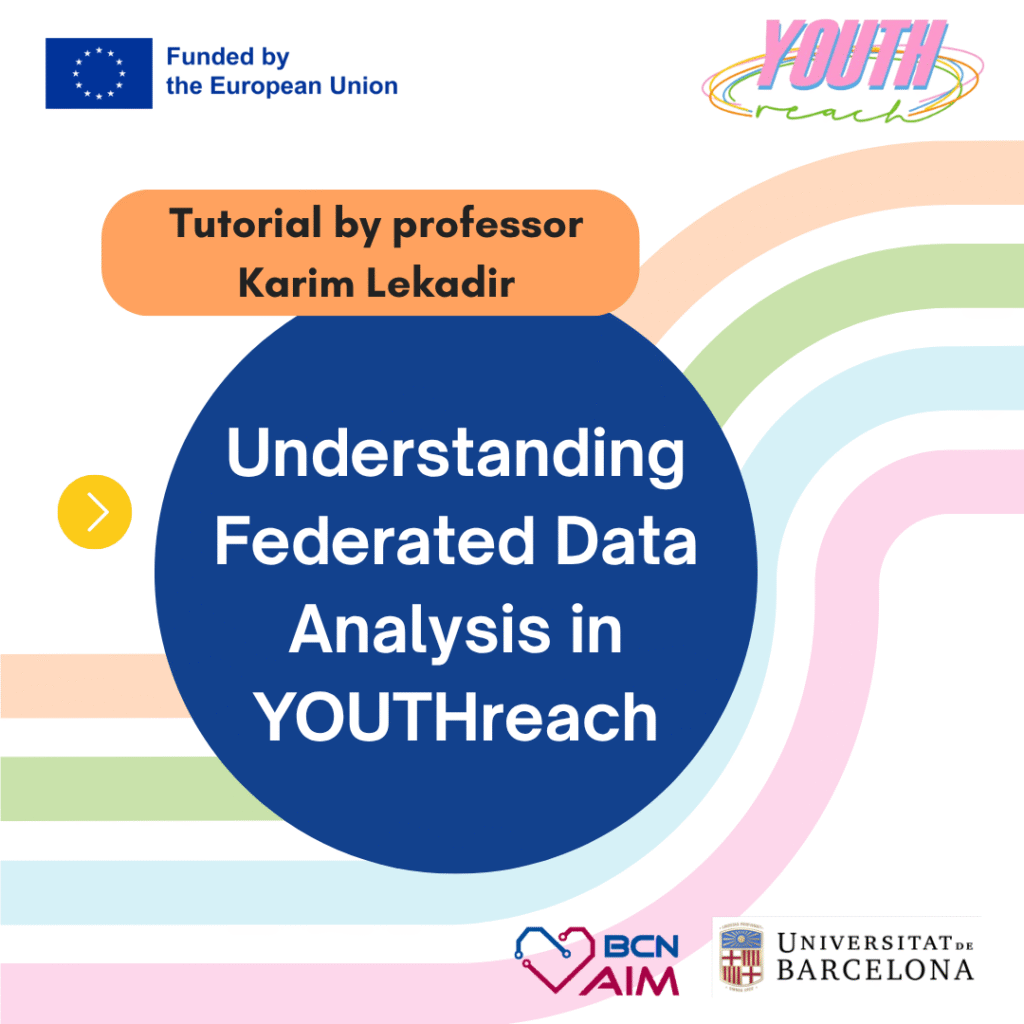In a world where data privacy, legal restrictions, and ethical concerns are more pressing than ever (especially in the field of youth mental health) innovative solutions are needed to enable collaborative research without compromising sensitive data. That’s where federated data analysis comes in. As part of our YOUTHreach project, Prof. Karim Lekadir (ICREA Research Professor at the University of Barcelona), recently hosted a tutorial introducing this important approach to our consortium. The session provided a clear and practical overview of how federated learning and analysis methods are being implemented within YOUTHreach, particularly to support research into youth-friendly mental health interventions.
Traditional data analysis typically requires that data from various sources be centralised in one location before analysis can begin. While this approach is straightforward, it can raise concerns around data privacy, especially when dealing with sensitive medical or mental health information. Federated data analysis turns this traditional approach: instead of moving data, it moves the analysis. In this framework, each data-holding site (like a research center or hospital) runs computations locally and only shares aggregated results or model parameters with a central node. This allows for collaborative analytics without sharing raw data and thus offering a secure, privacy-respecting alternative.
For a large-scale, multi-country project like YOUTHreach, which involves sensitive youth mental health data, federated analysis offers numerous advantages:
These features are particularly relevant to our mission of developing responsible innovations in youth mental health care.
The tutorial provided practical examples to clarify how federated analysis works, including statistical averaging methods and machine learning models such as logistic regression, support vector machines, and deep neural networks. Prof. Lekadir also introduced advanced techniques for addressing potential cross-site biases. Additionally, participants explored how federated analysis can be used not only in clinical research but also for cost-effectiveness studies: an exciting new area for the youth mental health field.
This tutorial marks an important step in our collective learning journey. As YOUTHreach continues to build an ethical and technologically robust research ecosystem, federated analysis will play a key role in helping us collaborate across borders. Stay tuned for more updates on how YOUTHreach is putting these methods into practice to improve mental health outcomes for young people across Europe.

Find the latest YOUTHreach updates in your inbox!